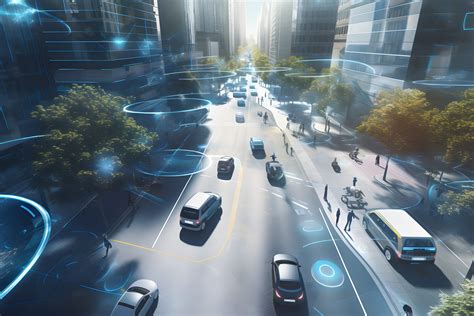Mobility Solutions Redefined

The concept of mobility has undergone a significant transformation in recent years, driven by advancements in technology, shifting consumer preferences, and the need for sustainable and efficient transportation solutions. As the world grapples with the challenges of urbanization, environmental degradation, and social inequality, the demand for innovative mobility solutions has never been more pressing. In this context, the term "mobility solutions" encompasses a broad range of transportation modes, services, and technologies that prioritize convenience, accessibility, and sustainability.
Key Points
- Emerging technologies like electric vehicles, autonomous driving, and mobility-as-a-service (MaaS) are redefining the future of transportation
- Sustainable mobility solutions can reduce greenhouse gas emissions, improve air quality, and enhance public health
- Integrated transportation systems that combine public, private, and shared mobility options can increase efficiency, reduce congestion, and enhance user experience
- Data-driven insights and analytics are crucial for optimizing mobility solutions, predicting demand, and improving operational efficiency
- Collaboration between public and private sector stakeholders is essential for developing and implementing effective mobility solutions that address the needs of diverse user groups
Evolution of Mobility Solutions

The evolution of mobility solutions has been marked by significant milestones, from the introduction of electric vehicles and hybrid cars to the emergence of ride-hailing services and bike-sharing platforms. Today, the mobility landscape is characterized by a proliferation of new technologies, business models, and services that are transforming the way people move around cities and towns. For instance, autonomous vehicles are being tested and deployed in various parts of the world, promising to enhance safety, reduce traffic congestion, and improve mobility for the elderly and disabled.
Key Trends and Technologies
Several key trends and technologies are driving the evolution of mobility solutions, including electrification, autonomization, and digitization. Electric vehicles, for example, are becoming increasingly popular, with many countries investing heavily in EV infrastructure and incentivizing consumers to switch to electric cars. Meanwhile, autonomous driving technologies are being developed and tested by companies like Waymo, Tesla, and Cruise, with the potential to revolutionize the transportation industry and reduce accidents caused by human error.
| Mobility Solution | Benefits | Challenges |
|---|---|---|
| Electric Vehicles | Zero Emissions, Lower Operating Costs | High Upfront Costs, Limited Charging Infrastructure |
| Autonomous Vehicles | Enhanced Safety, Improved Mobility for the Elderly and Disabled | Technical Complexity, Regulatory Hurdles |
| Mobility-as-a-Service (MaaS) | Convenience, Flexibility, Reduced Need for Personal Vehicle Ownership | Data Privacy Concerns, Dependence on Digital Infrastructure |

Benefits and Challenges of Mobility Solutions

Mobility solutions offer numerous benefits, including reduced traffic congestion, improved air quality, and enhanced mobility for diverse user groups. However, they also pose significant challenges, such as the need for substantial investments in infrastructure, the risk of job displacement in traditional industries, and the potential for increased dependence on digital technologies. To mitigate these challenges, stakeholders must adopt a nuanced and multifaceted approach that balances the needs of different user groups, prioritizes sustainability and equity, and fosters collaboration between public and private sector entities.
Addressing the Challenges of Mobility Solutions
To address the challenges of mobility solutions, stakeholders must prioritize data-driven insights and analytical capabilities to optimize operations, predict demand, and improve user experience. This requires the development of advanced data analytics platforms, the integration of IoT sensors and devices, and the application of machine learning algorithms to inform decision-making. Additionally, stakeholders must prioritize collaboration and partnership to develop and implement effective mobility solutions that address the needs of diverse user groups and prioritize sustainability, equity, and social responsibility.
What are the key benefits of mobility solutions?
+The key benefits of mobility solutions include reduced traffic congestion, improved air quality, and enhanced mobility for diverse user groups. Additionally, mobility solutions can increase efficiency, reduce costs, and improve user experience.
How can stakeholders address the challenges of mobility solutions?
+Stakeholders can address the challenges of mobility solutions by prioritizing data-driven insights, analytical capabilities, and collaboration. This requires the development of advanced data analytics platforms, the integration of IoT sensors and devices, and the application of machine learning algorithms to inform decision-making.
What role will autonomous vehicles play in the future of mobility solutions?
+Autonomous vehicles are expected to play a significant role in the future of mobility solutions, enhancing safety, reducing traffic congestion, and improving mobility for the elderly and disabled. However, the development and deployment of autonomous vehicles will require significant investments in infrastructure, technology, and regulatory frameworks.
In conclusion, the future of mobility solutions will be shaped by a combination of technological innovation, shifting consumer preferences, and evolving regulatory frameworks. To develop effective mobility solutions, stakeholders must prioritize collaboration, data-driven insights, and a deep understanding of user needs and behaviors. By addressing the challenges and benefits of mobility solutions, we can create a more sustainable, equitable, and efficient transportation system that enhances the lives of individuals and communities around the world.



